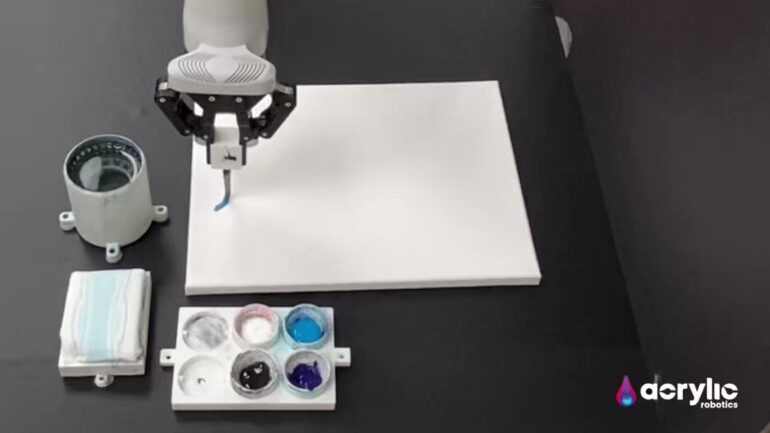TL;DR:
- Acrylic Robotics, a Canadian startup, introduces an AI-powered art robot.
- These robots use machine learning and neural networks to replicate existing artworks.
- A digital system allows artists to track each brushstroke, making it accessible worldwide.
- Imperfections in the robot-crafted art add authenticity, appealing to artists and collectors.
- Acrylic Robotics emphasizes quality assurance for uniformity.
Main AI News:
In the realm of artistic innovation, a quiet revolution is taking place. Meet the art robots, the latest marvels in the world of creative automation. These ingenious machines, equipped with an array of hardware and software, are designed to craft diverse forms of art, bridging the gap between technology and imagination.
One such groundbreaking creation hails from the innovative Canadian startup Acrylic Robotics, founded by the visionary Chloe Ryan. The genesis of this enterprise sprang from Ryan’s aspiration to expedite and elevate her own artistic endeavors. “I realized if I could build this for myself, I should be making it accessible to all artists,” she affirmed.
Leveraging the power of artificial intelligence, Acrylic Robotics has introduced a robotic marvel that redefines the production of artists’ work on a grand scale. Powered by machine learning and neural networks, these AI-driven artisans possess the ability to identify patterns, learn from their own output, and meticulously replicate human artistic forms. Ryan’s creation goes even further by producing near-perfect facsimiles of existing artworks.
What sets Acrylic Robotics apart is its intuitive digital system that enables artists to meticulously track each brushstroke. Whether you’re an artist in Toronto or Tokyo, this technology is accessible to anyone with a laptop or tablet, transcending geographical boundaries.
The allure of these robot-crafted artworks lies in their subtle imperfections. Ryan’s research revealed a fascinating insight: artists crave a touch of irregularity in their creations. “A certain degree of imperfection adds to the project’s appeal,” she asserts. While each piece mirrors the original, slight discrepancies exist, endowing the art with an authentic character that distinguishes it from mass-produced alternatives.
Ryan’s commitment to quality is unwavering. She emphasizes the importance of meticulous quality assurance to ensure that these robot-crafted artworks maintain a level of uniformity. “Macroscopically, the goal is to have them all be completely identical,” Ryan affirms.
As robotics and artificial intelligence continue to advance, art robots beckon us to reconsider the very essence of artistry. They spark profound questions about the definition of art, the role of the artist, and the intriguing possibilities of machine-led creativity. Chloe Ryan’s brainchild not only replicates but also reimagines existing artworks, blurring the lines between imitation and originality.
Conclusion:
The emergence of Acrylic Robotics and their AI-powered art robots signifies a significant shift in the creative landscape. These machines not only replicate artworks but also introduce subtle imperfections that resonate with artists and consumers alike. This innovation redefines the market by offering a bridge between technology and artistic expression, prompting us to question traditional definitions of art and creativity. As the demand for unique, machine-assisted artworks grows, the market for AI-powered art robots is poised for substantial growth and transformation.

